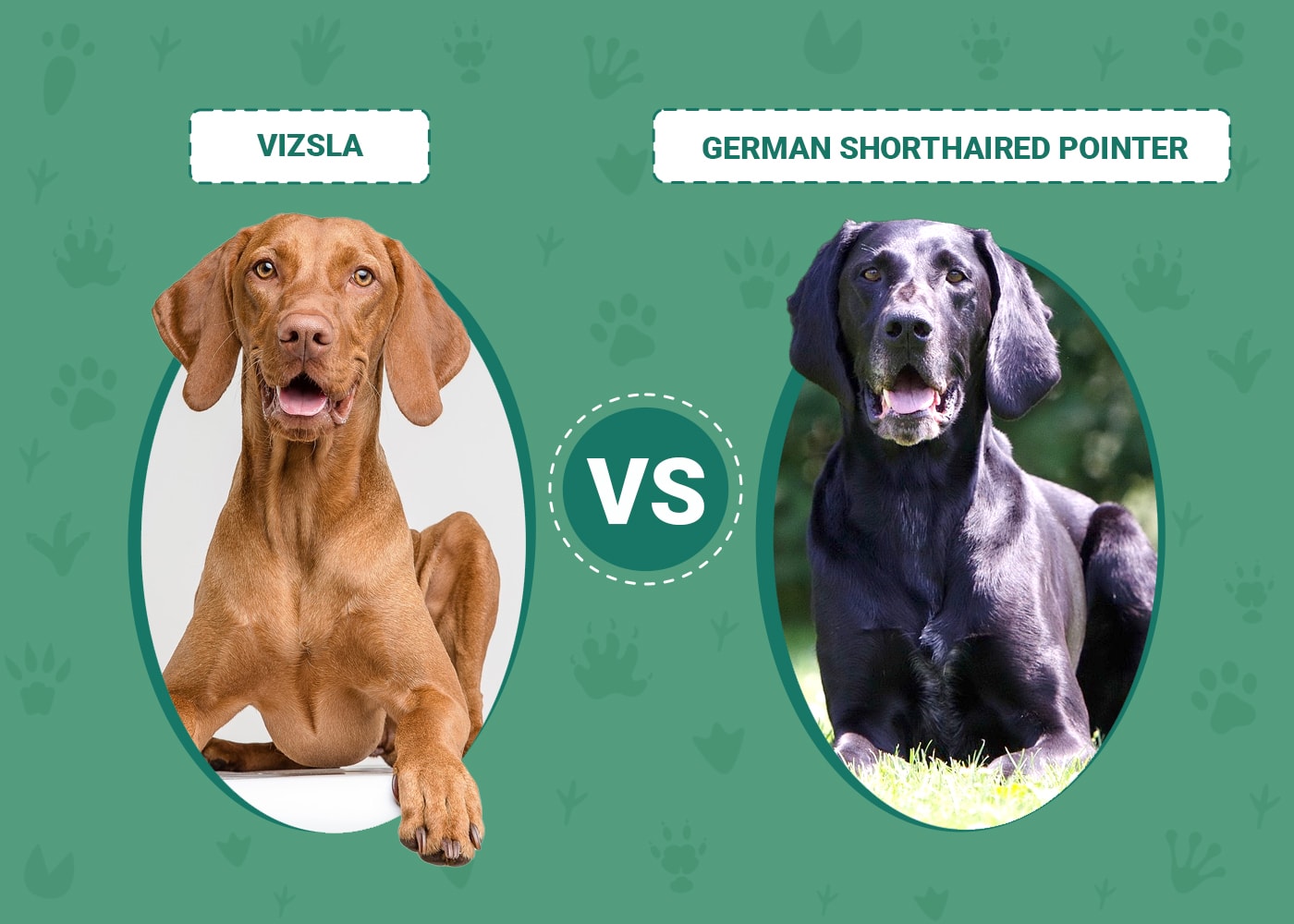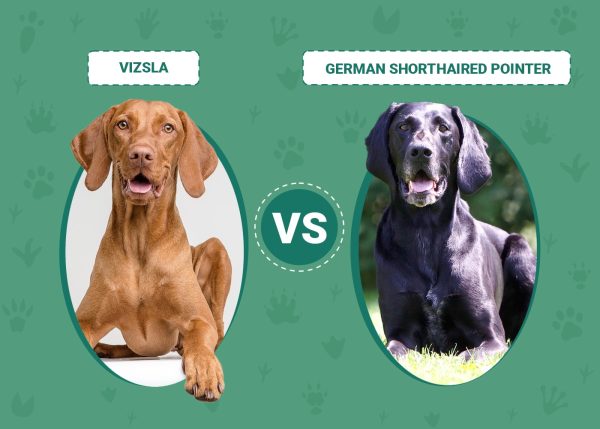Click to Skip Ahead
Getting a new dog can be great fun, and two popular choices are the Vizsla and the German Shorthaired Pointer. Both can make great pets and have similar body styles. However, there are a few important differences between them. If you are considering getting one of these dogs, keep reading as we discuss their personality and many other factors to help you determine which one is right for your home.
Visual Differences
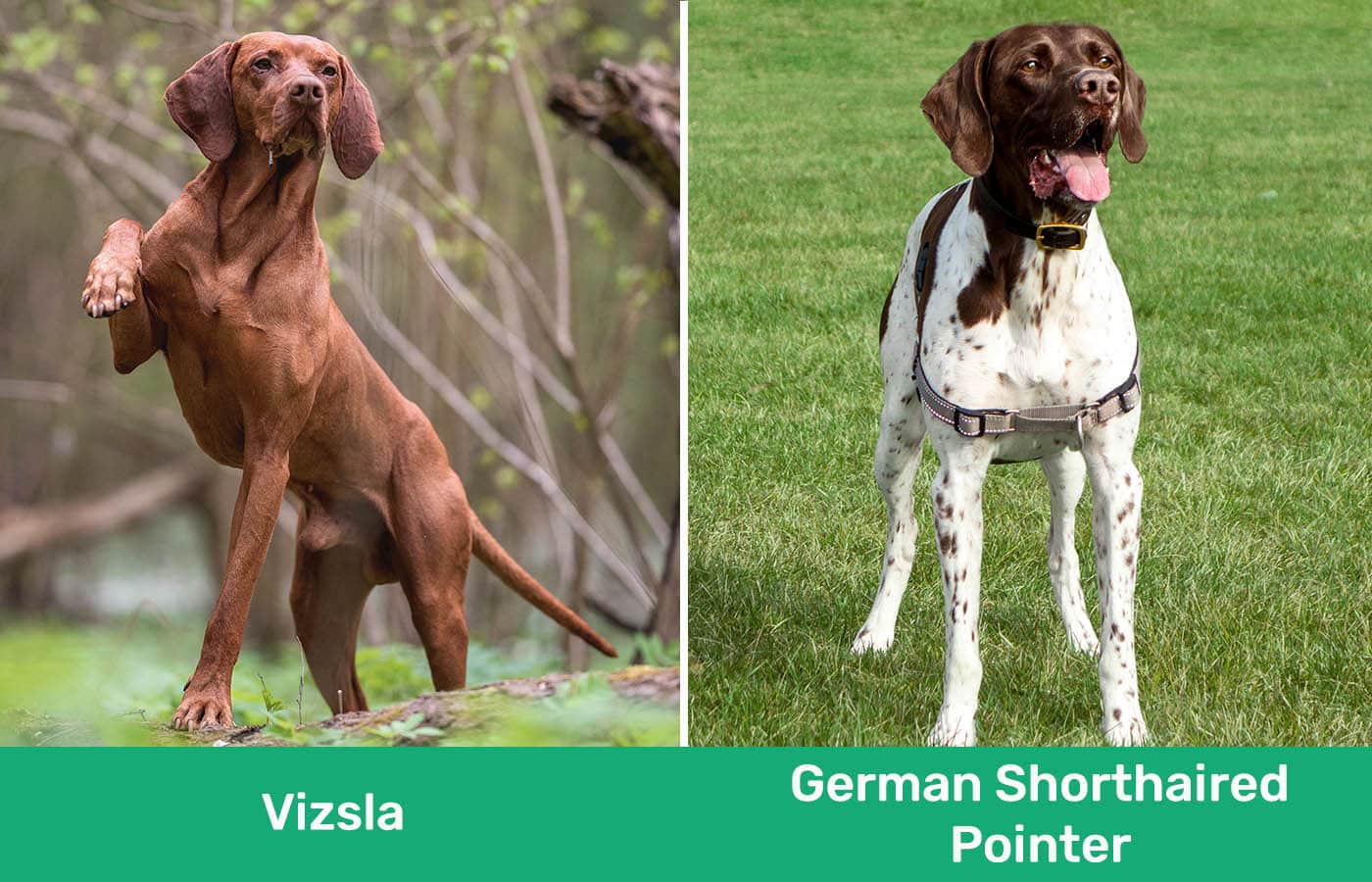
At a Glance
- Average height (adult): 21–24 inches
- Average weight (adult): 40–60 pounds
- Lifespan: 12–14 years
- Exercise: 1+ hours a day
- Grooming needs: Easy
- Family-friendly: Yes
- Other pet-friendly: Sometimes
- Trainability: Intelligent, focused
- Average height (adult): 21–25 inches
- Average weight (adult): 45–70 pounds
- Lifespan: 10–12 years
- Exercise: 1+ hours a day
- Grooming needs: Easy
- Family-friendly: Yes
- Other pet-friendly: Sometimes
- Trainability: Intelligent and eager to please
Vizsla Overview
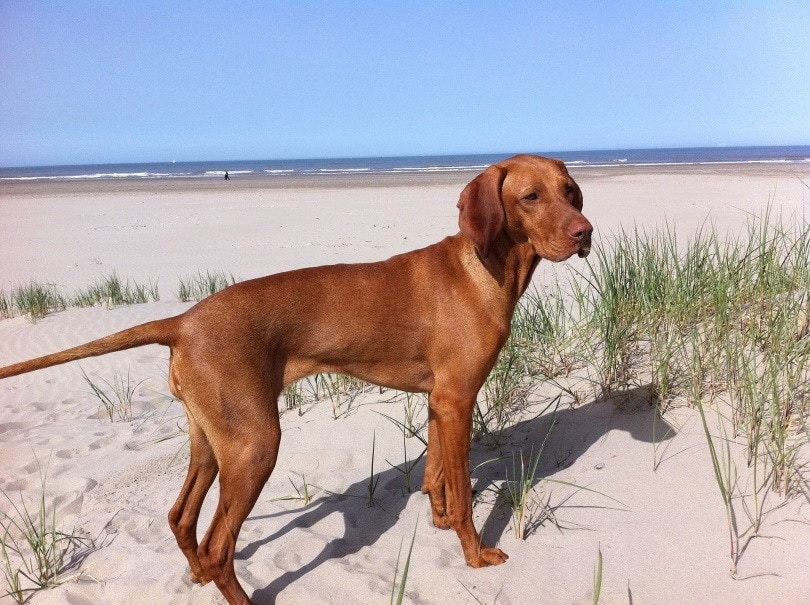
Personality / Character
Vizslas are incredibly affectionate dogs and form strong bonds with their owners. They thrive on human companionship, and many owners describe them as Velcro dogs because they tend to stick close to their owners and crave constant physical contact and attention. They are playful and are typically good with children. They get along well with other dogs but have a strong prey drive, so they will need plenty of socialization as puppies to help them get along better with smaller pets like cats.
Training
The Vizsla breed is easy to train, and they enjoy the attention that they get during training sessions. They are also eager to please and quite intelligent, so they can learn complex tasks. They respond well to positive reinforcement training and can stay focused on the task at hand but have a high energy level, so it’s better to hold your training sessions after playtime, when they’ve had a chance to run around.
Exercise
Vizslas are active dogs that will need more than 1 hour of exercise each day, and they enjoy running, jogging, playing fetch, or participating in agility or flyball. Vizslas naturally love retrieving, so games that involve fetching and chasing are ideal. They also require plenty of mental stimulation via training, interactive puzzles, etc. to help keep them from becoming bored throughout the day. Since they are so active, they are not suitable for small apartments and require a large space to run.
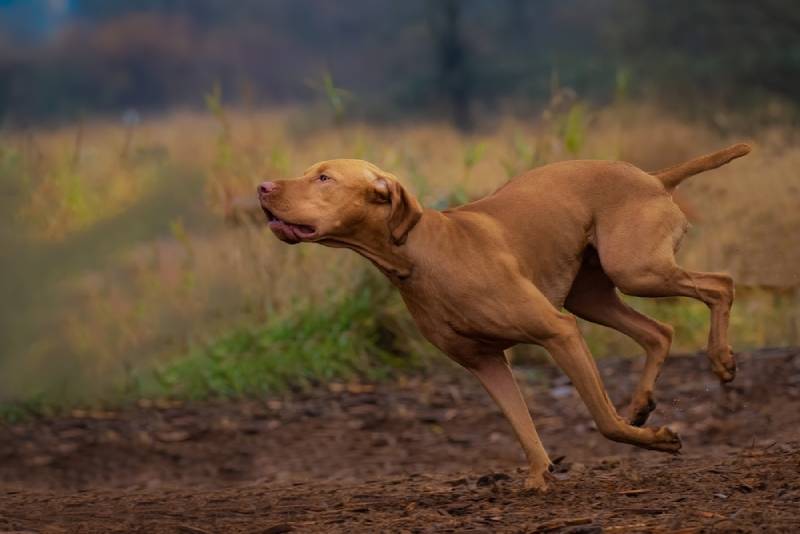
Suitable For:
Vizslas are active dogs and will need a family that can spend 1–2 hours each day ensuring that they get the exercise that they need. They also require a large yard to run around in and plenty of attention. They are best suited to families without cats or other small animals, but they can get along with these if there’s plenty of early socialization. It’s also better to have experience with active breeds, but these intelligent dogs are easy to train, so they can make a good first pet.
German Shorthaired Pointer Overview
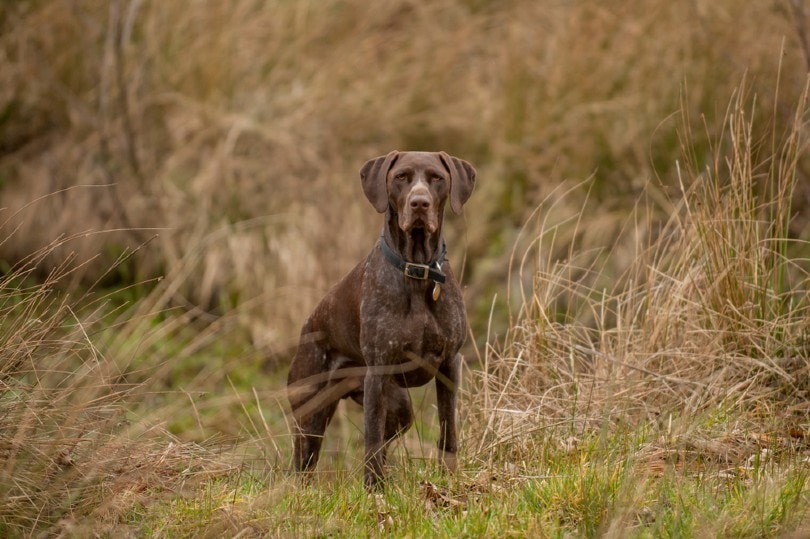
Personality / Character
The German Shorthaired Pointer is a highly intelligent dog with almost unlimited energy. They are skilled in pointing, tracking, and retrieving and even excel in dog sports like agility and obedience. Their athleticism and endurance enable them to participate in various physical activities, but their owners still describe them as affectionate and loyal toward their families. Like the Vizsla, they form strong bonds and prefer to stay close to a family member. They are typically sociable and friendly dogs that get along well with children and other pets but have a strong prey drive, so they will need extra socialization to get along with smaller animals.
Training
The German Shorthaired Pointer is intelligent and eager to please, so it can be fun to train them, even if you are a beginner. Their trainability makes them ideal for therapy work and search and rescue. These dogs are also good in sports and agility competitions and can even perform scent work. They respond well to positive reinforcement and learn quickly, but like the Vizsla, they have a high energy level, so it’s better to train them after playtime to help keep them focused.
Exercise
You will want to aim for 1–2 hours of daily exercise when you own a German Shorthaired Pointer. They are active dogs with plenty of energy and can become destructive if bored. Spread the activity over several sessions throughout the day to help make it easier to manage and provide plenty of mental stimulation, like puzzles and interactive toys. They enjoy hiking, biking, swimming, and playing fetch in open spaces. These dogs also tend to run and play throughout the day and are unsuitable for small apartments.

Suitable For:
The German Shorthaired Pointer is suitable for active families with a large yard where the dog can run around. If you lead an active lifestyle and enjoy outdoor pursuits like running, hiking, or participating in dog sports, they can be a good choice, especially if you have the time to train them. They are best suited to people with experience with high-energy breeds, but as long as you are active and attentive, they can be a good first dog.
Which Breed Is Right for You?
Both breeds are extremely active and need plenty of space to run around. They also require a family that can spend time with them, giving them all the attention that they need and ensuring that they get enough activity. These dogs are easy to train, though, and get along well with children and other pets. Vizslas are slightly harder to train but are more affectionate, while the German Shorthaired Pointer is more eager to please but will want to spend more time on their own.
See Also:
- Vizsla vs. Redbone Coonhound: The Differences (With Pictures)
- Vizsla vs. Labrador: The Key Differences (With Pictures)
Featured Image Credit: (T) Cole Wyland, Unsplash | (B) belizar, Shutterstock

